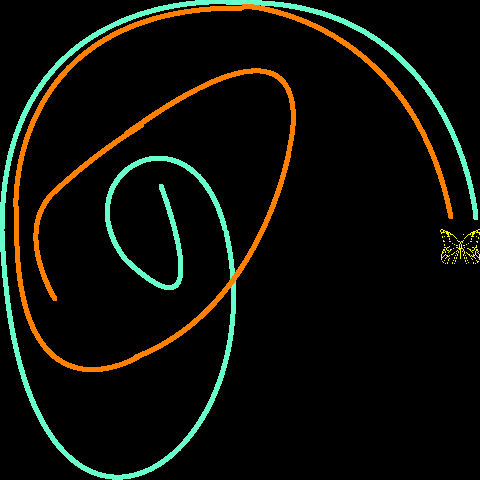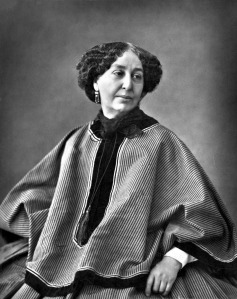 |
| Kurt Gödel |
As I peruse through biographies of the lives of philosophers, scientists, mathematicians, and other researchers, I find myself fascinated. I wonder how their hometowns, education backgrounds, and people they’ve met throughout their lives influenced their success in their work. In investigating what it means to be a genius and what it takes to produce amazing work, I still wonder about how people interacted with scientist Albert Einstein, mathematician Bertrand Russell, logician Kurt Gödel, and philosopher Ludwig Wittgenstein and what they thought of their greatness. With the distance and objectivity I have as I read about these famous minds of history, I appreciate the way history becomes more of a gradient of many events that give rise to settings, culture, and ideas themselves.
Einstein’s job as a patent clerk set the stage for his rumination of space and time. As he struggled to find a place in the world, he thought about the universe itself and what sort of theories would describe it. Russell bore wealthy apparel that represented his aristocratic lifestyle. It gave him an authoritative feel to his advice and commentary on society. As radios and newspapers covered his work, people revered him as a celebrity, especially how he emphasized scientists to engage with the public. Mathematician Alfred Whitehead and Russell’s Principia Mathematica laid the foundation for mathematics and computer science of the 1930s and beyond. Even Wittgenstein’s friendly demeanor earned him friends with other philosophers. Gödel made similar contributions to mathematics and philosophy. His story, though, was not marked with such popularity.
While Gödel studied at Princeton University alongside Einstein, he contrasted the physicist’s casual attire with his formal white jacket. He appeared distanced and detached, as though he were observing everything in the universe around him. Among Gödel’s contributions include his incompleteness theorems and an argument for God’s existence. The first incompleteness theorem let rule-based systems like those of Principia Mathematica prove arithmetic truths though they’ll always remain incomplete. The second incompleteness theorem prevent arithmetic theories from being proved consistent within those theories. At the time of their publication in the 1930s, scholars found it appealing there were truths they couldn’t prove. Gödel’s formalisms of this idea even appealed to scholars who searched for romantic beauty in their work. These incompleteness theorems have been referenced throughout mathematics, computer science, and logic and even in more distant disciplines such as aesthetics and neuroscience. This beauty of logic carried through Gödel’s discussions, lectures, and publications as other intellectuals admired his work. Even professor of cognitive science Douglas Hofstadter would write on the themes of mathematics and symmetry encompassing the theorems in Gödel, Escher, Bach. In the book, Hofstadter described the connections between music, art, and logic through a “strange loop.” Hofstadter argued this “strange loop” gives rise to consciousness, and, as the neurons of the brain respond to what the body perceives, they give rise to the entity itself that creates those perceptions about the world. This creates a “strange loop.”As he inspired discussions in philosophy, literature, science, and theology, the poet Hans Magnus Enzensberger wrote “Home to Gödel” and musician Hans Werner Henze’s “Second Violin Concerto was based of the setting of this poem. He might not have been the most popular celebrity among the general public like Einstein and Russell were, but Gödel surely had his fans among the intellectuals.
In this excerpt from “Home to Gödel,” Enzensberger describes the incompleteness conclusions and how fascinating Gödel’s thought process may be.
In any sufficiently rich system
including the present mire
statements are possible
which can neither be proved
nor refuted within the system.
Those are the statements
to grasp, and pull!
Gödel himself was nowhere near as outspoken as his fame might suggest he was. Born to a Luthern family in Moravia, he was shy and often nervous around others. As he identified as Austrian, he spoke German rather than Czech. He excelled in school and studied mathematics at the University of Vienna. There, he met with philosophers of the Vienna Circle, a group that supported logical positivism, a form of philosophy that used logic to address philosophical issues. They used this “scientific outlook” as a way to explain truths in science without using other forces such as mysticism. As they discussed what about mathematics truly existed in the universe, they formed their arguments and engaged in debates between each other. Gödel himself agreed with many of their views, but his belief in God and his belief in Platonism differentiated himself. This Platonistic view held that mathematical truths were discovered as though the mathematician were an explorer in a cave, rather the Constructionist view, which is that of an inventor building a machine. While a Platonist might believe mathematical objects, such as numbers and symbols, are real, Constructivists would be inclined to argue those objects are only works of fiction humans have created.
When Gödel received his doctorate in 1930, his dissertation showed first-order logic is complete. This meant every logical truth using first-order predicate logic could be proved in rule-based systems. It was after this he would perform work on the incompleteness theorems. Logician Jaakko Hintikka wrote Gödel’s announcement of the incompleteness conclusion at the Königsberg Conference on Epistemology of the Exact Scientists was the most important moment in 20th-century logic and possibly in all of logic. When Gödel announced it, however, his audience remained silent. Only Hungarian mathematician John von Neumann realized its important implications at the time. When Gödel published the proof, he lectured at Princeton University and rose to popularity. Later, theoretical physicist Roger Penrose argued that Gödel’s theorem shows that “Strong AI” doesn’t hold true. Human minds are not computers, and the artificial intelligence will never completely replicate them. Gödel himself didn’t believe his incompleteness conclusion proved Platonism true, but it did refute the anti-Platonist view that, in mathematics, truth and provability are the same thing.
Gödel would suffer from poor health physically mentally through his remaining work. When he married dancer Adele Nimbursky, he moved to Princeton University where he remained until his death. He applied for U.S. citizenship and, while examining the propositions of the constitution, discovered how the U.S. could legally turn into a dictatorship. Similarly, as Gödel studied the field equations of Einstein’s general theory of relativity, he imagined a world in which time could move backwards. His perfectionism lead him to only publish a few more papers that described his Platonist views, including “Russell’s Mathematical Logic” and What’s is Cantor’s continuum problem?” But the logician’s health would get the best of him. As he grew weak and disturbed by psychological effects, he grew a distrust towards everyone except his wife. While he made appointments with doctors and wouldn’t attend them and refused medicine, he was hospitalized after refusing to eat in the 1970s. When he died in 1978, the certificate read that the cause of death was “malnutrition and inanition caused by personality disturbance.”
Other logicians such as Austrian philosopher Ludwig Wittgenstein engaged in these debates as well. When he met with Russell during a meeting of the Moral Science Club at Cambridge University in the 1940s, some say Wittgenstein threatened philosopher Karl Popper with a fireplace poker during a debate. Regardless, Wittgenstein’s peers described him with emotion ranging from hatred to adoration. Indeed, Wittgenstein sought to use philosophy to grant solutions to the “puzzles” of contemporary life, and his seminal work Tractatus Logico-Philosophicus (Latin for “Logico-Philosophical Treatise”) sought to answer these issues philosophy faced. Such an ambitious goal showed how Wittgenstein believed philosophy to represent the integrity and truth of life that everyone seeks to achieve. The work’s central thesis was that propositions, or statements of the world, were pictures of reality. According to philosopher Norman Malcolm, Wittgenstein found this idea when he came across a newspaper using a map to describe the location of an automobile crash. The map pictured reality the same way propositions do. Philosopher Georg H. Von Wright described the beauty of Tractatus in its simple, static sentences similar to one of Wittgenstein’s architectural projects. Wittgenstein himself built a mansion using utmost precision down to the smallest details in Vienna for one of his sisters and later built a sculpture in the studio of his friend sculptor Drobil. Wright described the perfection and elegance of the finished work contrasted Wittgenstein’s dynamic, searching personality.

Wittgenstein himself sought this intellectual comfort in all of his work. As he drew inspiration from Russian writer Leo Tolstoy and his book The Gospel in Brief, he found solace after witnessing a tremendous amount of suffering against the Russians during World War I. Wittgenstein’s cousin economist Friedrich Hayek once described him so engrossed in a detective novel he wouldn’t speak to him. When he did finish, though, he engaged in lively discussion of the Russians in Vienna. The experience had shaken Wittgenstein fundamentally as a person and left him disillusioned with some of his views of society. Still, Wittgenstein’s enthusiasm for intellectual discussion showed how he lectured for long periods of time as professor of philosophy at Cambridge University. He dressed informally in a way that students found approachable even in his longwinded explanations. He did this without getting tired and even cut into his student’s lunch breaks.
The challenges logicians and other philosophers face today may still leave us speechless, as they did during the Königsberg Conference. Still, the beauty of logic permeates through whatever theorem, equation, or idea it prove. The lives of these minds reveal the nuances and arguments that carried through the decades, and they’ll remain relevant through the future of mathematics, physics, and philosophy.














